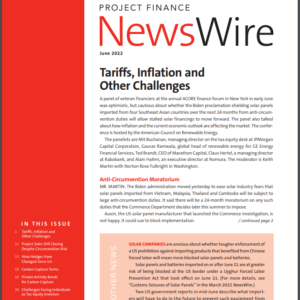June 27, 2022
How Hedges Have Changed Since Uri, Lee Taylor, REsurety CEO
Project Finance NewsWire spotlights developments affecting project finance and the energy sector; you can find Lee Taylor’s feature on page 15.
AN EXCERPT:
The hedge market is offering the same menu of options a year and a half after a sudden cold snap in Texas left some power projects facing huge losses.
However, more attention is being paid to how to cap exposure in extreme scenarios.
Winter Storm Uri was an extreme cold event in late February 2021, centered in Texas but also affecting neighboring states, that was a one-in-10-year or one-in-50-year event, depending on which meteorologist you ask. It was not off the charts, but it involved an extreme level of sustained cold. There were deaths and significant property damage in Texas.
The storm led to a spike in electricity demand, especially for heating, and a shortfall in supply.
The shortfall in supply was driven by a number of factors, but the main driver was power plants froze physically and transmission infrastructure was shut down. These factors affected all types of power plants. The most pronounced effect was on gas-fired generation, but renewables, and wind in particular, were affected as well.
There was a pronounced financial impact in ERCOT because of the mechanism within ERCOT to reward generation during spikes in demand. There are administrative adders to the spot electricity price that force the price of power to go to a cap, incentivizing supply when demand spikes. At the time, the cap was $9,000 a megawatt hour. The result was that a spot market in which the price for electricity is often in the $20 to $40 range per MWh, was suddenly pricing power at $9,000 a MWh for three days.
Continue reading by downloading the PDF.


